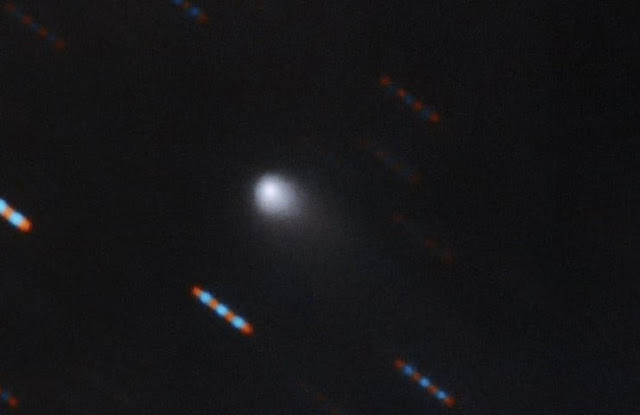September interstellar visitors discovered in our solar system - comet 2I / Borisov, were imaged by astronomers as it approached the sun. Now, a new study has to look deeply into what comets are made of.
Small body called "planetesimals" by astronomers because it has the potential to become a planet under gravity conditions were right. Most planetesimals in our solar system are ice, like a comet, but a small part of them rocky. But there must be a planetesimal observed from outside the solar system as well, say the authors in the paper: "Assuming that the process [of planet formation] The same has happened elsewhere in the galaxy, a large number of planetesimals wandering through interstellar space, some eventually crossed the solar system. "
Scientists are not sure whether other solar systems is the same as us in terms of how the planet is configured. Studying interstellar objects like 2I / Borisov gave us a chance to see how the planets formed in other regions of the galaxy.
The first opportunity to study this problem came with the invention of 'object Oumuamua shuttle, which captured the public imagination when it looks in our solar system last year. color and brightness suggest it was made of stone and metal and no water or ice, but scientists have never been able to determine exactly what it's made of.
With the new object 2I / Borisov, scientists were able to perform spectroscopic analysis and knowing the gas present in the comet's coma, or spherical particles and gas surrounding the comet center. It is difficult because the object is close to the sun, so that the glare from the sun made it difficult to collect enough light from the object to perform the analysis. It took two tries, but scientists are finally able to collect data from interstellar visitors.
They see a different surge in the ultraviolet spectrum in accordance with cyanogen gas, a combination of carbon and nitrogen. It is found in comets in our solar system as well, so it was not unexpected. However, there is an interesting note on gas: it is released as an object approaches the sun and heated, causing the gas to evaporate.
That means that as the object approaches the sun, it may give off more gas that could provide clues to her makeup. It will make a pass closest to the sun in December, so watch for more information about our interstellar visitors later.
The research paper is available for viewing on the archive arXiv pre-publication and will be published in the journal Astrophysical Journal Letters.
Small body called "planetesimals" by astronomers because it has the potential to become a planet under gravity conditions were right. Most planetesimals in our solar system are ice, like a comet, but a small part of them rocky. But there must be a planetesimal observed from outside the solar system as well, say the authors in the paper: "Assuming that the process [of planet formation] The same has happened elsewhere in the galaxy, a large number of planetesimals wandering through interstellar space, some eventually crossed the solar system. "
Scientists are not sure whether other solar systems is the same as us in terms of how the planet is configured. Studying interstellar objects like 2I / Borisov gave us a chance to see how the planets formed in other regions of the galaxy.
The first opportunity to study this problem came with the invention of 'object Oumuamua shuttle, which captured the public imagination when it looks in our solar system last year. color and brightness suggest it was made of stone and metal and no water or ice, but scientists have never been able to determine exactly what it's made of.
With the new object 2I / Borisov, scientists were able to perform spectroscopic analysis and knowing the gas present in the comet's coma, or spherical particles and gas surrounding the comet center. It is difficult because the object is close to the sun, so that the glare from the sun made it difficult to collect enough light from the object to perform the analysis. It took two tries, but scientists are finally able to collect data from interstellar visitors.
They see a different surge in the ultraviolet spectrum in accordance with cyanogen gas, a combination of carbon and nitrogen. It is found in comets in our solar system as well, so it was not unexpected. However, there is an interesting note on gas: it is released as an object approaches the sun and heated, causing the gas to evaporate.
That means that as the object approaches the sun, it may give off more gas that could provide clues to her makeup. It will make a pass closest to the sun in December, so watch for more information about our interstellar visitors later.
The research paper is available for viewing on the archive arXiv pre-publication and will be published in the journal Astrophysical Journal Letters.






